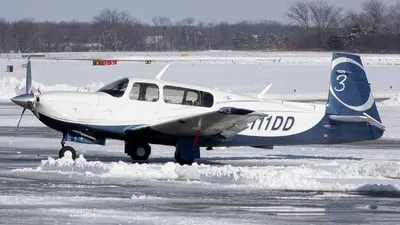Understanding Percent Power Calculations: Discrepancies Between POH and Engine Manufacturer Charts
As a flight instructor who specializes in complex aircraft transition training, I’ve found that proper power management is one of the most misunderstood aspects of aircraft operations. The MooneySpace thread discussing discrepancies between POH and Lycoming power charts highlights a critical gap in many pilots’ understanding of engine performance. In my twenty years teaching power management, I’ve observed that pilots often place excessive trust in POH percent-power tables without understanding the underlying calculations or limitations. What’s particularly valuable about this discussion is how it reveals the reality that percent power is not a direct measurement but rather a calculated value based on multiple assumptions. When coaching pilots through complex aircraft transitions, I emphasize that these charts are planning tools rather than absolute performance guarantees. The analytical approach taken by forum members—meticulously examining calculation methods and testing different formulas—exemplifies the kind of critical thinking that separates experienced aviators from those who simply follow the numbers blindly. Understanding these calculation differences isn’t merely academic; it directly impacts fuel planning, engine longevity, and overall operating economics.

A detailed MooneySpace forum thread explored a puzzling discrepancy between percent power calculations in Mooney POH charts versus Lycoming’s own engine documentation. The original poster, a new M20J owner, discovered that for identical manifold pressure and RPM settings, the two sources showed significantly different percent power values—sometimes varying by 5-7%. This sparked an extensive technical discussion, with multiple forum members contributing engineering analysis and historical context. Several experienced Mooney owners shared that they’d noticed similar inconsistencies across various aircraft types with Lycoming engines. A key insight emerged when a professional engineer explained that percent power calculations depend on multiple assumptions, including standard temperature, pressure altitude, and intake air density, which might differ between Lycoming and Mooney’s methods. Another contributor with aviation training background noted that manufacturers sometimes intentionally build conservative margins into POH calculations to ensure performance guarantees are met in real-world conditions. The thread included deep technical analysis, with several pilots sharing spreadsheets they’d developed to cross-reference and validate different calculation methods. Multiple contributors referenced Lycoming Service Instruction 1094D, which provides the formula for calculating brake horsepower using manifold pressure, RPM, and temperature. A consensus formed that Mooney’s calculations were likely more conservative than Lycoming’s direct formulas, with several owners suggesting that the POH values might include adjustments for installation effects like baffling and cowling design. By the thread’s conclusion, several practical solutions were offered, including using Lycoming’s calculations for planning purposes while maintaining awareness that actual performance might be slightly lower, and relying on fuel flow rather than calculated percent power as a more reliable real-world indicator. Check out the full discussion over on MooneySpace for detailed mathematical analyses and spreadsheet formulas from Mooney pilots and engineers.